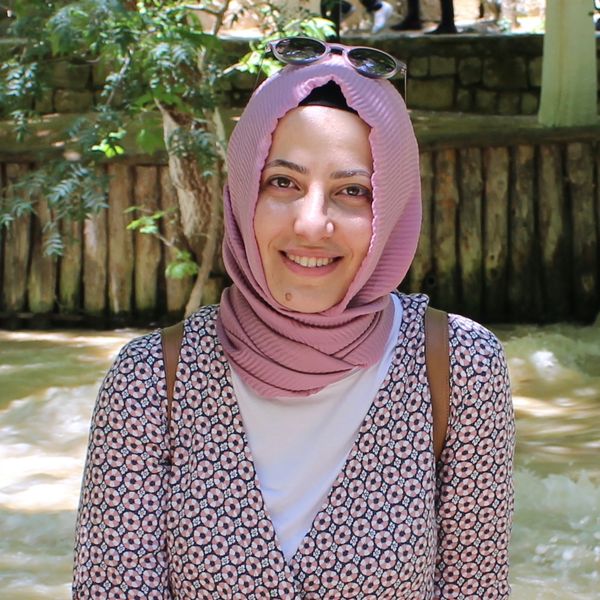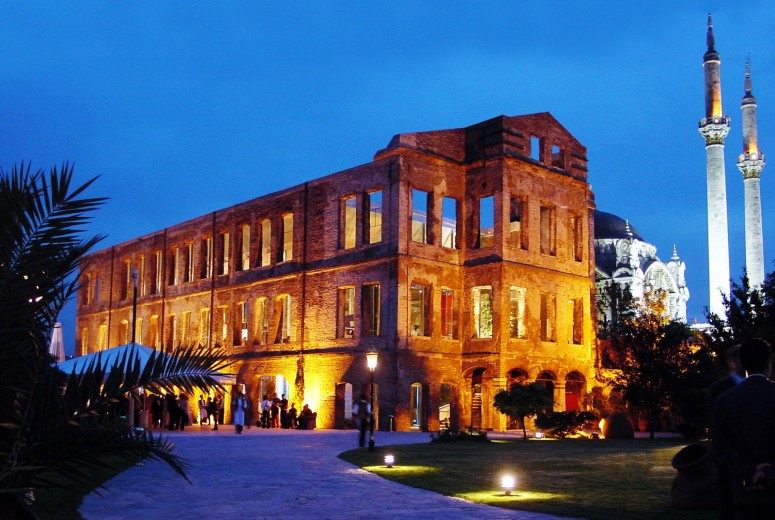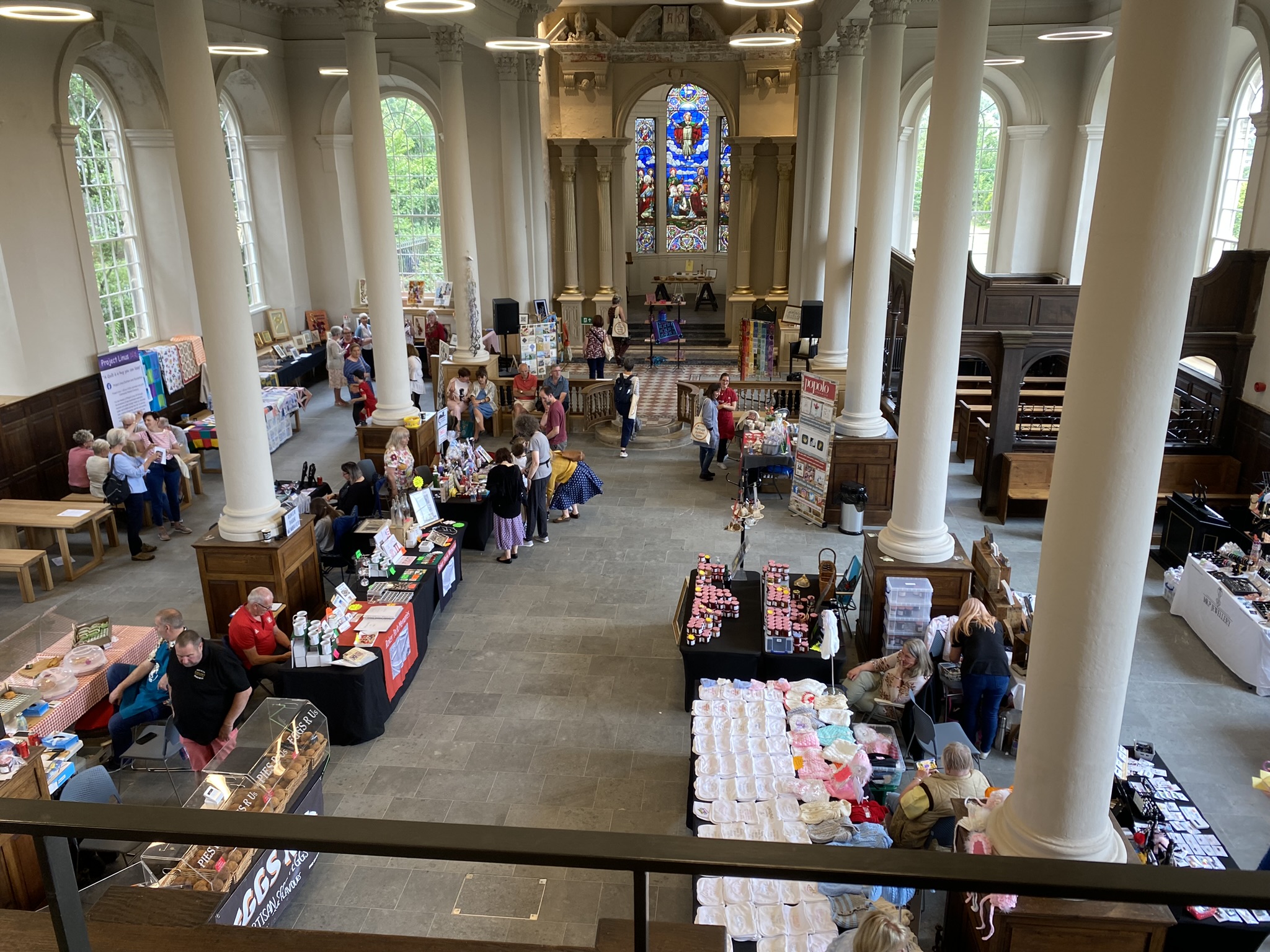
Alumni Spotlight; M.A. 2018
Gülnur grew up in Afyonkarahisar, Turkey, and has already had an inspiring academic career across many countries. As an undergraduate in Turkey, she completed a Bachelor’s in Architecture and then came to Boston University to complement this with our MA in Preservation Studies. At the time of the interview, she was in the final months of her PhD thesis at Newcastle University, UK, for her PhD in Heritage Conservation.
What in your undergraduate work motivated you to pursue a MA in Preservation Studies? What specifically within preservation holds your personal interest?
I studied architecture as an undergraduate at Suleyman Demirel University. It was a traditional design education, but what captured me was the stories of the places where we designed and aimed to understand the community and people. Even as a child, I loved listening to the stories and histories my grandmother told. I treasured the small objects she gave me that were symbols of those histories. Today I developed within preservation a strong interest in the intangible stories, people, and objects represented in a structure or place.
Was there anything in architecture, history, or conservation in Turkey that motivated you to pursue our MA?
My decision to pursue my MA in architecture, history, and conservation in Turkey was strongly motivated by a personal connection to the country’s rich architectural heritage. Growing up in Turkey, I was exposed to numerous historical sites and landmarks that sparked my interest. In particular, there was a historic kervansaray (caravanserai) in my hometown that captured my imagination. These were ancient structures acting as waystations for travelers. Located on the Silk Route, they were places of economic and cultural exchange. Even though this one was boarded up and inaccessible, it fascinated me.

My interest in architectural history and restoration deepened as I progressed through my architecture training. I found myself drawn to courses that explored the intricate relationship between built structures and the stories of the past. The more I learned about the importance of conserving architectural heritage, the more passionate I became about the field.
My journey took a significant turn when I undertook an historic preservation internship. The opportunity arose to participate in the restoration of an old stone farm, which was being converted into a university dean’s house. This experience allowed me to put my academic knowledge into practice and witness firsthand the transformation of a historic structure into a new meaningful space. This internship solidified my passion for architectural conservation and highlighted the immense satisfaction of revitalizing and repurposing buildings with historical significance. All of these factors, from my initial fascination with the kervansaray to my academic pursuits and practical experiences, coalesced to shape my decision to pursue an MA in preservation studies.
Along your academic path, you studied from Turkey to Massachusetts and England. Was it challenging to move abroad, leaving your family, friends, and home?
I left home to begin my studies when I was 13 to attend a boarding school in another city. Since 2015 I have been living abroad to continue my MA and PhD. Being away from my family is particularly hard, especially for birthdays, weddings, and other celebrations. The February 2023 Turkey-Syria earthquake was also a very difficult period to be away from family. I try to go home once a year, but the COVID-19 pandemic also complicated being away from my family. I now look forward to returning to Turkey after completing my PhD thesis.
What was the process of being awarded the scholarship that brought you to BU. Do you have any advice for foreign student candidates applying for scholarships and to the BU Preservation Studies?
After completing my Bachelor’s in Architecture, there was a studying abroad award process to which I applied. Together with some fellow students, I was awarded a scholarship to study for an MA and/or a PhD. This scholarship allowed me to attend Boston University first and then continue the PhD at the University of Newcastle. The scholarship program is called the Graduate Education Scholarship (known in Turkey as the “YLSY” in for short). The Ministry of National Education sponsors the program and guarantees work when the student returns to Turkey with the degree.
In my case, the scholarship I’ve received comes with the guarantee of an academic position. After applying and undergoing the necessary process, I have been accepted to an assistant professor position at Konya Technical University in the province of Konya, Turkey. This was the home of the world-famous poet Rumi. I will be about an hour and a half from my hometown, which will be a pleasant change.
While at BU, you wrote a capstone project on “The Advent of Preservation in Turkey: How Preservation Changed and Shaped the City of Istanbul.” What did your research reveal about preservation in both Istanbul and Turkey as a whole? Do Turkey’s preservation policies reflect the global preservation/conservation community?
Preservation in Turkey has slowly followed the global model. Starting in the late nineteenth century, Turkey preserved its best examples of architecture. The Ministry of Culture both promotes and funds preservation throughout the country. Like most of Europe, they follow the global conservation patterns, such as the guidelines in ICOMOS’s (International Council on Monuments and Structures) Athens Charter of 1933, Venice Charter of 1964, and later Charters. Most project funding comes directly from the Ministry of Culture and Tourism.

At the University of Newcastle, you are in one of England’s most northern cities with a rich industrial heritage. In your PhD research, you look at their industrial buildings. Can you tell us about them and their possible adaptive reuse? What are the possible ways that the people of Newcastle can reconnect with their industrial history?
Due to Newcastle’s proximity to the North Sea, it became an industrial center for coal taken from ships and transported all over England. It used to be said that Newcastle powered London. These warehouses and shipbuilding structures languish today and adaptive reuse is slowly reviving these neighborhoods. Shops and restaurants are well suited to these buildings, and much of the original structures remain. Occasionally a neighborhood will have a Heritage Open Day where the public can enter these buildings and explore the structures’ histories.
In the context of my research, I have always been interested in objects and places. I see preservation as telling the intangible stories of place. My research has focused on the people tied to these warehouses and neighborhoods. I have used the oral history of former residents and family members to understand life in these old warehouses and neighborhoods, the heritage of labor over two centuries. Some neighborhoods have been razed, but many still exist today.

What sort of courses have you taken in Newcastle? Are there activities or internships that you have enjoyed or helped to find your own path?
The English system has no set of core course requirements for the PhD. Upon matriculating, you begin your dissertation. There are workshops that I have taken that helped with my research and writing skills. I did student teaching for the first couple of years, and I thoroughly enjoyed sharing my ideas and knowledge with students. I look forward to the teaching aspects of my Assistant Professor position at the Konya Technical University.

How is your PhD different from the MA in Preservation Studies, and how did the MA prepare you for further academic work?
Writing my dissertation has been very independent work. I enjoyed the coursework while I was at Boston University. Coming initially from an architectural design degree, I was unprepared to write as much as I did in the MA in Preservation Studies. At Boston University, I gained most valuable experiences in how to research and write, which was fundamental to my research work here in the University of Newcastle.
Upon returning to Turkey, what are the critical challenges for preservation? Are there particular preservation initiatives you would like to be a part of?
As I have seen in the US and England, a key issue in Turkey is the controlled balance of preservation and development. Additionally, it is popular for new construction to look like old architecture, a pastiche of an older period.
I want to be a part of a change in how Turkey enacts preservation. There is currently no engagement with the local people and community during preservation projects. Stories, histories, and people are central to any building project and must be part of the preservation design process. Secondly, not enough attention is paid to improving our old structures for earthquake events. This, too, must become part of the preservation design process.
Lastly, I understand you collaborated on a Docomomo landscape book, for which you are a co-author with Professor Jan Haenraets (Boston University) and Professor Andrew Saniga (University of Melbourne). It is now in the layout/graphics phase and coming out shortly. How was it to collaborate on a research project, and how did it help you in your academic activities?
I learned so much about research and writing, but also about planning, organizing my work, and how to communicate with a large number of participants. These skills are all important in my dissertation research and writing. I developed persistence in working with third parties and even learned about the book creation process. As a collaboration with senior academics, this project was truly a transformative process for me.
Contributors: Gülnur Cengiz, Kristen Dahlmann, and Jan Haenraets
Return to the Alumni menu.